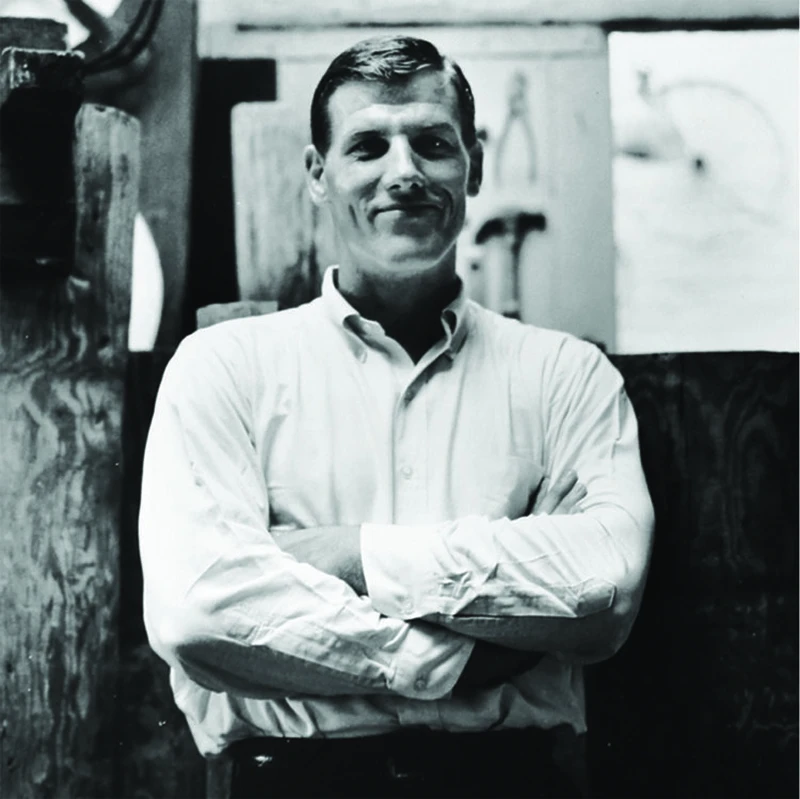William John Kennedy


b. 1930, United States
d. 2021
William John Kennedy was born in 1930 in Glen Cove, NY [on the northern shore of Long Island]. Kennedy served in the US Army for three years as a paratrooper during the Korean War and was honorably discharged in 1953. He studied at Syracuse University, the School of Visual Arts and Pratt Institute. After working in the mid 1950s for three years as an assistant and studio manager for renowned Vogue fashion photographer Clifford Coffin, Kennedy went on to enjoy a rewarding career as an advertising photographer in New York City. Much of his career was spent working under the radar primarily as an advertising/commercial photographer whose original material was handed to the advertising agencies he worked for. Kennedy’s work appeared in publications such as LIFE magazine and Sports Illustrated and his commercial work – most now lost - appeared in campaigns for national and international clients including Avon, GE, IBM, RJR Nabisco, American Express and Xerox. Throughout his professional life, Kennedy also pursued his own personal interest in fine art photography and up until the early 2000s he developed a full body of work from his travels within the US as well as thoughout the globe. Kennedy has always loved the sea. He was a lifeguard growing up and an avid fisherman. His personal work includes a number of photographs taken on the Long Island coast. Kennedy was a lifelong New Yorker but he and his wife relocated to Miami in the late 1980s to be in the sun and near the sea. Kennedy’s most intriguing body of work was rediscovered in the mid noughties when he and his wife found a set of negatives and transparencies that he had taken of Andy Warhol and Robert Indiana. William John Kennedy met Robert Indiana at an art opening in 1963 and began taking photographs of him in his Coenties Slip studio. They soon became friends and Indiana then introduced Kennedy to Warhol at The Americans exhibition at the Museum of Modern Art in 1963. The story of the rediscovery of the negatives itself is fascinating. Mike Huter, the founder of KIWI [Kennedy Indiana Warhol Initiative] first met the Kennedys around the time they were relocating from their house in Miami Beach to a nearby apartment. During the move they found a box that they had tucked away in a closet many years prior. This box was filled with negatives from 1963-1964 taken of Robert Indiana and Andy Warhol as well as other artists in Warhol’s circle. The film had been processed at that time by Duggal Visual Solutions considered to be the pre-eminent bespoke photography lab on the East Coast. The film was processed but never printed. Notably after the rediscovery Kennedy asked Duggal to print the images. Soon after this a documentary entitled Full Circle: Before they were famous was made about William John Kennedy’s lost archive. Kennedy’s Warhol work was introduced to the Warhol Museum in Pittsburgh soon after it was rediscovered and the Museum and KIWI collaborated on a beautifully produced museum box set which was shown for the first time at the Versace Museum in Miami. A selection of Kennedy’s Warhol and Indiana images premiered during Art Basel, Miami Beach in 2010. Selected images from these photo shoots were selected and printed as editioned prints. Since than these editions have been shown in a small number of galleries in the US as well as in the UK. The work is in numerous collections including most notably the Andy Warhol Museum in Pittsburgh. The museum has a permanent display of Kennedy’s image of Andy Warhol holding the acetate of Marilyn Monroe. While Kennedy’s work has been included in many publications over the years, in September 2022, ACC Artbooks is publishing a monograph on Kennedy’s Andy Warhol and Robert Indiana images. This is the first publication devoted solely to Kennedy and his work The Indiana and Warhol photographs have been shown quietly over the years in a few galleries in the US and most recently was at a booth as part of PhotoLondon in September 2021. In addition to Kennedy’s Warhol and Indiana work we have access to images he took throughout the 60s, 70s, 80s, and 90s. In the early 1960s, Kennedy produced a unique collection of photographs of the Bowery on the Lower East Side of Manhattan. These were done at a time when the Bowery was home to the destitute and poor of the city. These incredibley important historical images have just been re-discovered.After the mid 1960s Kennedy primarily worked in colour both commercially and for his private work. These images are really wonderful and show not only Kennedy’s signature and innate sense of composition but also his strong affinity for colour and layering. Alongside Kennedy’s photography, he has written two manuscripts one -a semi fictional memoir- entitled Thanks A Hell of a Lot Andy Warhol and the other a poignant story about Kennedy’s long-time love of the sea and his experience as a native Long Island surfer, fisherman and free diver.